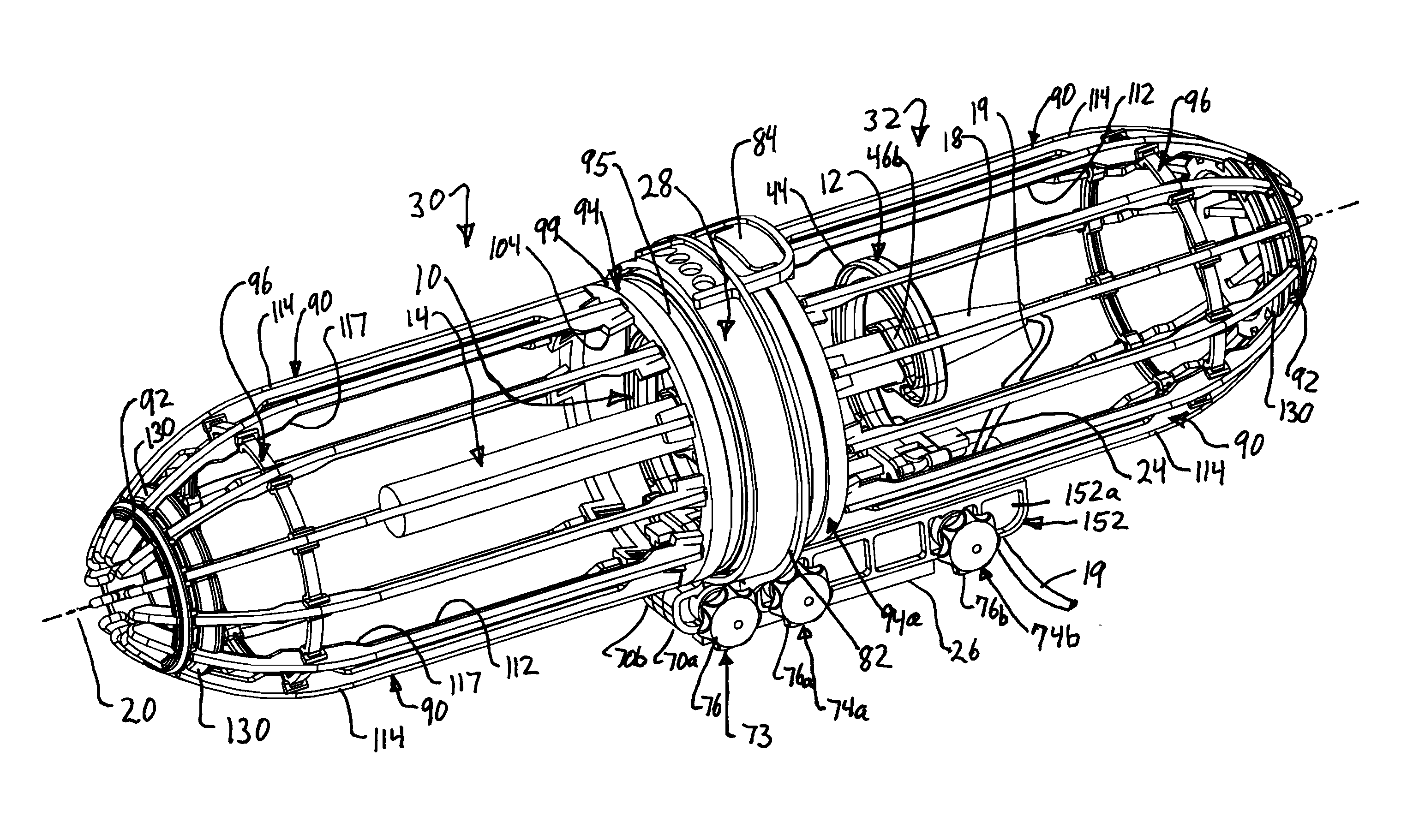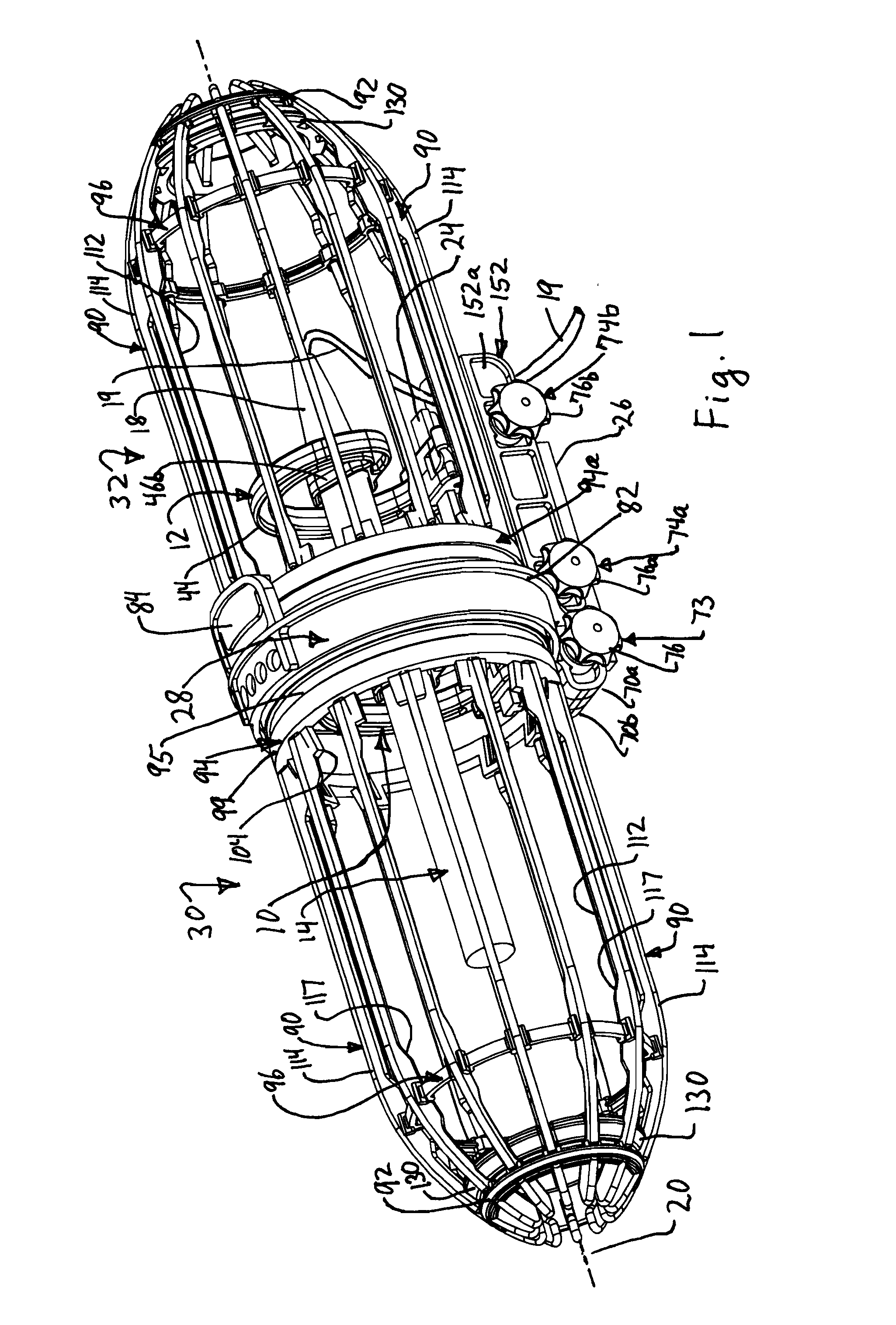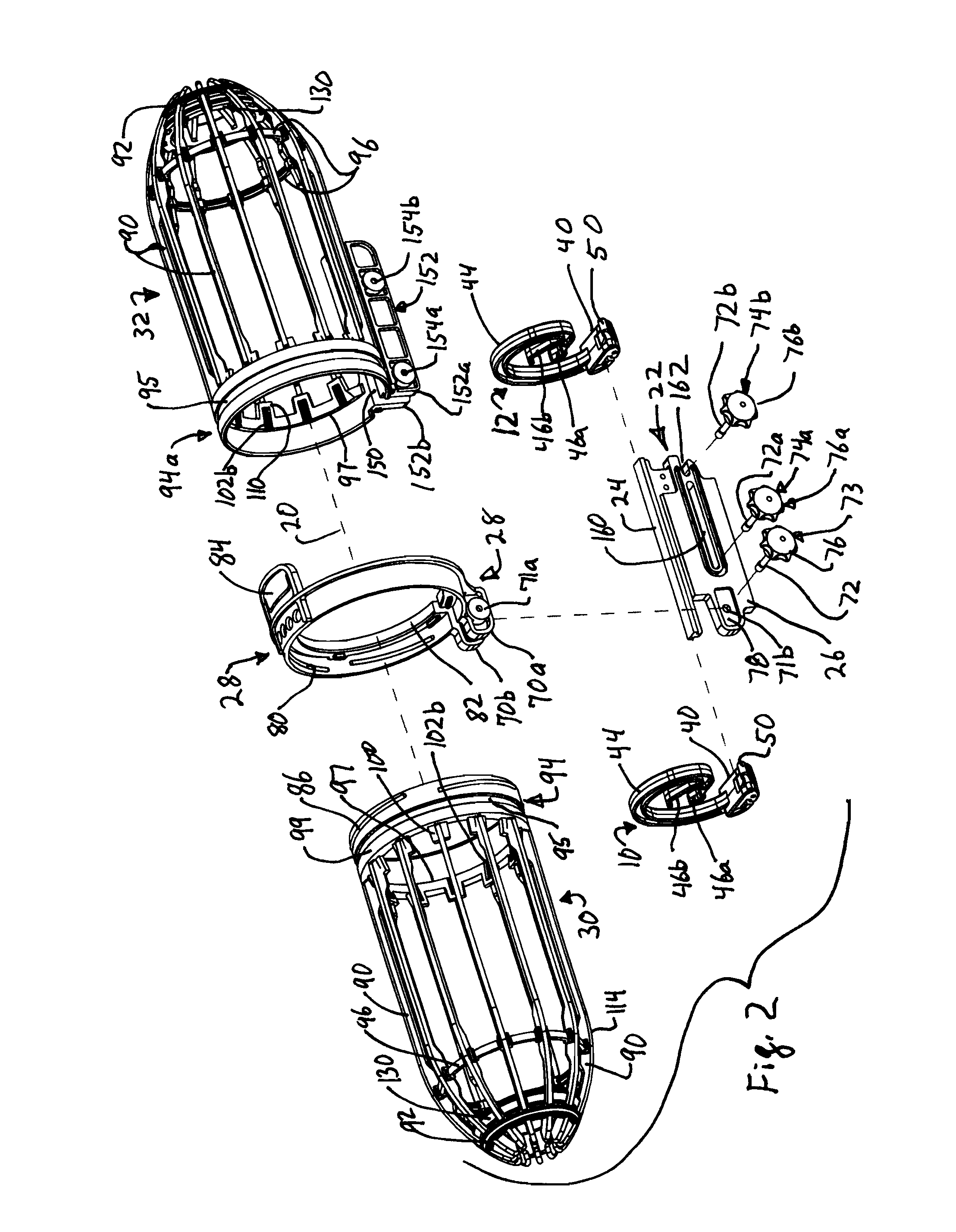Microphone mounting method and apparatus
a microphone and mounting method technology, applied in the direction of mouthpiece/microphone attachment, transducer details, electrical transducers, etc., can solve the problems of difficult to fasten the microphone to the support, audio distortion and noise, and distortion of the audio signal from the microphone, so as to reduce the transmission of vibration to the microphone, stable microphone support, and low frequency noise
- Summary
- Abstract
- Description
- Claims
- Application Information
AI Technical Summary
Benefits of technology
Problems solved by technology
Method used
Image
Examples
Embodiment Construction
[0040]FIGS. 1-2 show first and second microphone supports 10, 12 which are spaced apart a distance sufficient to hold an elongated body of microphone 14 with a sensor end 18 and opposing cable end 16 from which optional communication cables connect to the microphone to carry electronic communication signals. The microphone extends along longitudinal axis 20 during use and may be a wireless microphone or transmit electronic signals relating to audio input through and electrically or optically conductive cord or cable 19 (FIG. 12). The supports are movably connected to an elongated connector 22 having an inner rail portion 24 and have what is preferably a generally flat piece extending radially outward from axis 20 forming an outer connecting portion 26. The relative directions and distances “inner” and “outer” are with reference to the longitudinal axis 20 of the actual or fictional microphone held by the supports 10, 12 during use.
[0041]A connecting bracket 28 is fastened to the elo...
PUM
 Login to View More
Login to View More Abstract
Description
Claims
Application Information
 Login to View More
Login to View More - R&D
- Intellectual Property
- Life Sciences
- Materials
- Tech Scout
- Unparalleled Data Quality
- Higher Quality Content
- 60% Fewer Hallucinations
Browse by: Latest US Patents, China's latest patents, Technical Efficacy Thesaurus, Application Domain, Technology Topic, Popular Technical Reports.
© 2025 PatSnap. All rights reserved.Legal|Privacy policy|Modern Slavery Act Transparency Statement|Sitemap|About US| Contact US: help@patsnap.com



